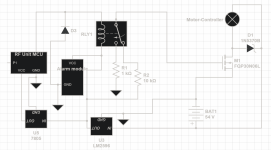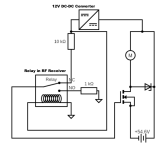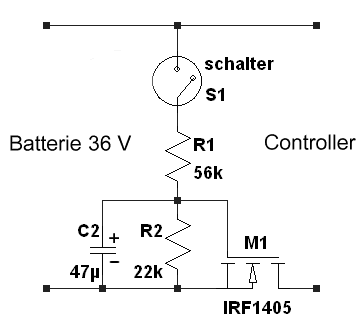I've connected an N-Channel MOSFET (https://pdf1.alldatasheet.com/datasheet-pdf/view/52370/FAIRCHILD/FQP30N06L.html) with the motor controller and tried to control it using a RF remote receiver. RF receiver has an MCU that triggers the relay. The motor runs at 54V while the RF receiver runs at 12V so, there is a DC-DC converter that supplies the source voltage for the receiver. The gate of the MOSFET is driven by +12V from the converter and is shut by connecting it to the ground. The circuit works fine for a while (or at-least when not connected to the motor) but when in operation the MOSFET becomes damaged. I have also placed a flyback diode however, MOSFET is still getting damaged. The gate becomes ineffective permanently and it doesn't stop the flow of current even when connected to the ground. A gate-source shortage is then observed.
Update: The MOSFET gets damaged when not running the motor even once. Maybe even without connecting the motor at all. There is an alarm module in the circuit as well that I am powering from the point where the relay coil is connected.

Update: The MOSFET gets damaged when not running the motor even once. Maybe even without connecting the motor at all. There is an alarm module in the circuit as well that I am powering from the point where the relay coil is connected.




